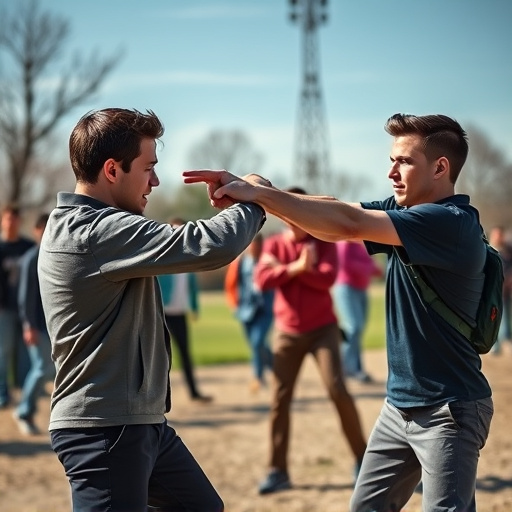Learning basic self-defense skills is essential for college students' personal safety, offering them knowledge and tools to protect themselves in potential danger. By understanding awareness, avoidance, de-escalation tactics, and physical maneuvers like blocks, strikes, and joint locks, students gain confidence and resourcefulness. Universities provide resources such as emergency systems, security patrols, workshops, and peer support groups that significantly enhance self-defense capabilities and foster campus security. Cultivating situational awareness and recognizing safe routes can deter potential attackers, making self-defense a crucial skill set for navigating campus threats. Regular practice improves students' confidence in high-pressure scenarios.
For many college students, navigating campus life can pose unique challenges. One often overlooked aspect of personal safety is self-defense. This article equips you with essential knowledge and practical skills to enhance your security as a student. From understanding basic self-defense principles and cultivating situational awareness to learning physical defense techniques, these strategies empower you to protect yourself effectively. Discover campus resources and support systems that can further bolster your safety net.
Understanding Self-Defense Basics: Skills Every College Student Should Know
Learning basic self-defense skills is an essential aspect of personal safety for college students. In today’s world, being equipped with knowledge and tools to protect oneself can make a significant difference in potential dangerous situations. By understanding simple yet effective techniques, students can gain confidence and the ability to defend themselves if needed.
Key self-defense strategies involve awareness, avoidance, and de-escalation tactics, coupled with practical physical maneuvers. Students should be taught how to recognize potential threats, navigate crowded areas safely, and communicate assertively to deter harmful intentions. Physical techniques include basic blocks, strikes, and joint locks that can help diffuse an attacker temporarily. These skills empower students to protect themselves while also encouraging them to prioritize safety and resourcefulness during their college years.
Creating a Safety Net: Resources and Support on Campus
Creating a safety net is paramount for self-defense among college students. Many universities offer specialized resources and support systems designed to keep students secure on campus. These can include emergency notification systems, where students can quickly alert authorities or trusted contacts in case of danger. Additionally, campus police departments often conduct regular security patrols and provide personal safety workshops, equipping students with valuable self-defense knowledge and skills.
Beyond these measures, student unions and counseling services may offer peer support groups and resources tailored to common concerns, such as personal safety, especially during late-night hours or in isolated areas. Utilizing these campus resources can significantly enhance a student’s ability to defend themselves and foster a sense of security within their academic environment.
Situational Awareness: Preventing Hazards Before They Arise
College students, especially those new to campus life, are often targeted by criminals due to their increased vulnerability. One of the most effective self-defense strategies is to cultivate strong situational awareness—the practice of being fully present and observant in any given environment. By staying alert and aware of your surroundings, you can prevent potential hazards before they arise.
This involves developing a keen sense of what’s happening around you. Walk with purpose, keep your head up and eyes forward, and be mindful of any suspicious activity or individuals. Regularly assess your route to classes, dormitories, or common areas, identifying well-lit paths and busy locations that deter potential attackers. Situational awareness is a powerful tool that can enhance your safety as a college student and empower you to take proactive measures for self-defense.
Physical Defense Techniques: What to Do When Confronted
When faced with a physical confrontation as a college student, knowing effective self-defense techniques can be a powerful tool. The first step is to recognize potential threats and remain alert in public spaces on campus. This includes being mindful of your surroundings, especially in isolated areas or during late-night walks. If a dangerous situation arises, the goal is to de-escalate it if possible, but understanding basic physical defense strategies can help students defend themselves confidently.
One key technique is to maintain distance and avoid close quarters where an attacker might gain leverage. Using your voice to shout and attract attention can also deter potential assailants. Simple movements like punching or kicking can be powerful tools; target vulnerable areas such as the eyes, throat, or groin to inflict maximum pain and create an opening for escape. Practice these moves regularly to build confidence, ensuring you know how to maximize your body’s capabilities in a high-pressure situation—a crucial aspect of self-defense for college students.
